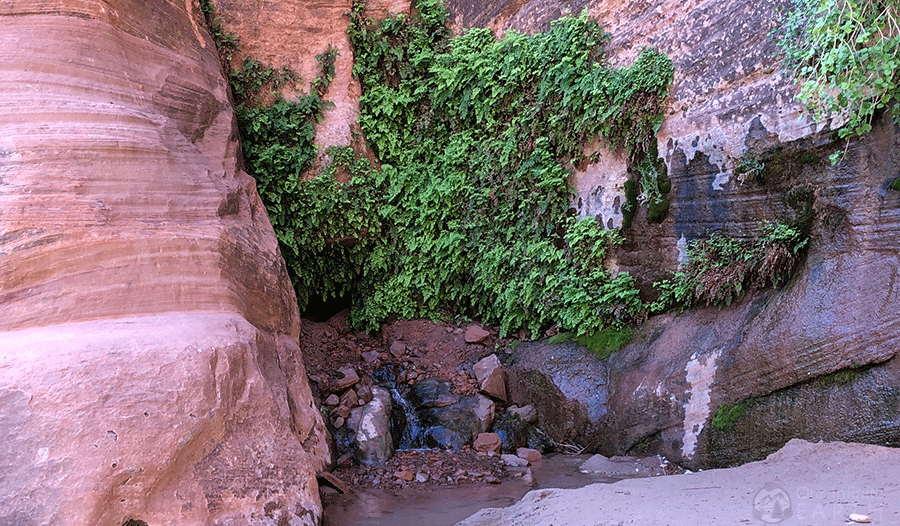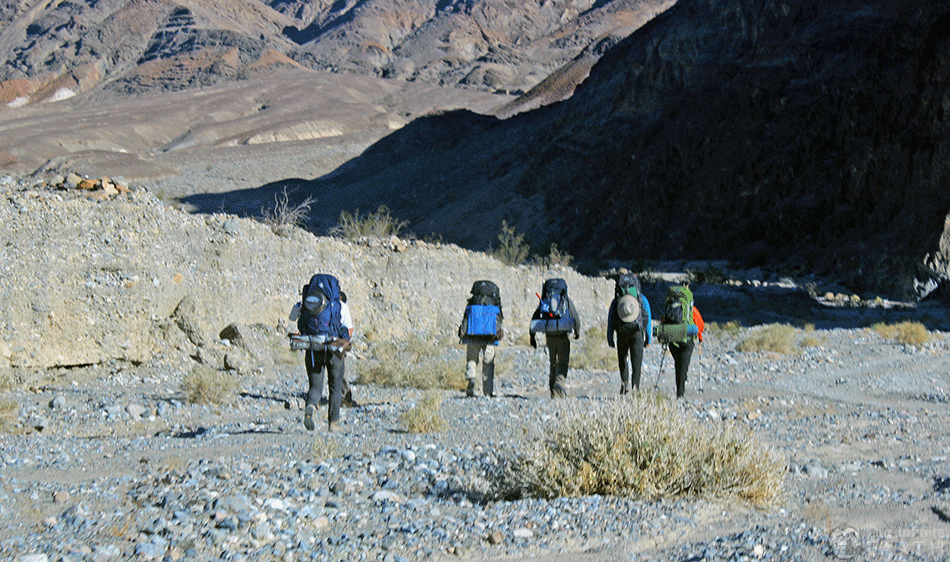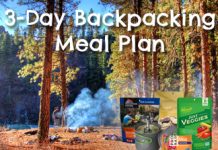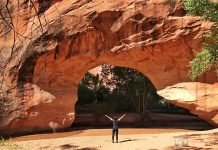Being properly hydrated when hiking or backpacking is not only vitally important for your health, but for your enjoyment as well. Dehydration can lead to serious health problems, which can be especially dangerous if you’re on a backpacking trip in the middle of no where for days at at time.


The biggest issue that comes with stay hydrated is that water is heavy and inconvenient to carry! So in order to keep weight you’re carrying as low as possible while also ensuring that you stay hydrated, it’s best to figure out just how much water you expect to need during your hike.
Hydration Best Practices
Pre-hydrate – hydrating before hiking gives your body a “head start” so that once you start hiking, you’ll last longer before needing more water. If you’re starting already dehydrated, it’s going to be more difficult to remain hydrated during your hike. Drink about a liter of water in the few hours before setting off if you can. Drink it slowly so that your body an absorb it – and then make sure to pee before you leave!
Sip Often – start sipping water every 10-15 minutes right at the beginning of the hike. Don’t wait until you’re thirst to start drinking. The more you can keep yourself hydrated throughout the hike, the more enjoyable your trip will be.
Don’t Chug – if you’re sipping water every 10-15mins, you’re constantly re-hydrating your body. The small amounts allows the water to be better absorbed. If you’re chugging water, it’s going to go through you more quickly as it’s too much at one time for your body to absorb.
Don’t Over Do It – it is possible to drink too much water. While it’s very unlikely that you will actually do this, too much water can also make you pee a lot, which reduces your hiking time and just makes you feel full and bloated. It can also dilute sodium levels in your blood. (Salty snacks are also a good idea to enjoy on your hike!)
Replace Electrolytes, Not Just Water – when you exert yourself and sweat, you lose electrolytes, which are also an important part of keeping your energy levels up. If you’re hiking for more than an hour, you should considered trying to replace electrolytes during this hike. Sodium and potassium are the most important, but calcium and magnesium are too. One of the easiest ways to do this is just to add an electrolyte powder to your water.
Post-hydrate – once you’re done with your hike, drink extra water to re-hydrate yourself and get back to normal. If you’re backpacking, it’s especially important to drink water at camp in between hikes (when it’s available) as both a post and pre-hydrate. When you’re in the wilderness for days at a time, you want to keep your hydration levels up as much as possible since it will likely decrease over time the longer you’re away from steady water supplies.
How much water should you drink when you’re hiking?
Roughly a 1/2 liter (2 cups or 16oz) of water every hour is what you should be aiming for when hiking during normal conditions in order to stay hydrated.


When hiking in heat, humidity, or at higher altitudes, this doubles to roughly 1 liter every hour.
Also know yourself and listen to your body. While this is a good general rule of thumb to follow, it will vary from person to person. Some people just naturally drink and need more water than others. But if you’re not drinking 1/2 liter every hour, you really should try to increase this to avoid problems later on.
Also to reduce weight, it’s a good idea to bring a water bottle with filter or purification tablets with you if you know there’s going to be a water source on the trail. That way you can just drink right out of the steam water that carrying all of your water with you!
Calculating How Much Water To Bring When Hiking
If you want to get more specific and take into account the myriad of other factors that can influence how much water you should drink, here’s a more detailed calculation for that:
Here are the factors you need to know for this calculation:
- distance
- elevation gain
- temperature
- altitude
- backpack weight
Get ready to do some math!:
((Miles x 20) + (Elevation Gain / 16.66) + ((Temperature – 80) -> (IF POSITIVE /20) x 120) + ((Altitude – 10000) -> (IF POSITIVE /2000) x 120) + ((Weight – 50) -> (IF POSITIVE /25) x 120) / 120 = Total Liters
Then it’s also a good idea to add another .5 liters in there for safety.
Example:
A 10 mi hike with an elevation gain of 2000ft in 100 degrees at an altitude of 12,000ft, carrying a 60lb pack. (Phew that sounds awful!)
10 Miles x 20 = 200 minutes
2000ft / 16.66 = 120 minutes
100 degrees – 80 = 20, which is a positive number, so we continue with the rest of this part of the equation; 20/20 = 1 unit of 20; 1 X 120 = 120 min
12,000ft – 10,000 = 2,000, which is a positive number, so we continue; 2,000/2,000 = 1 ; 1 x 120 = 120min
60lbs – 50 = 10, which is positive, so we continue; 10/ 25 = .4; .4 x 120 = 48mins
Total minutes = 608 / 120 = 5.06 liters (+.5 for safety)
How this calculation works:
We are trying to reduce all of these variations into time, which can then be converted to liters.
In general, the average person walking on a flat path will finish a mile in less than 20mins. So Miles x 20 = Minutes to finish those miles
In general, every extra 1000ft of elevation gain will take an additional hour. 1000ft elevation gain = 60mins.
If it’s hot (over 80 degrees), you should bring an extra liter of water for every 20 degrees. Temperature – 80 = Degrees over 80. If this number is positive: Degrees over 80 / 20 = Units of 20. For every unit of 20, we want to bring an additional liter of water, but we need to write this in time rather than liters so that it can be added to the other metrics. In the general estimate of time to liters mentioned above, .5 liter = 60mins. So 1 unit of 20 = 1 liter = 120mins.
You should also bring an additional liter for every 2,000ft if hiking over altitudes of 10,000ft. Altitude – 10,000 = altitude over 10,000ft. Altitude over 10,000ft/2000 = Units of 2000. For every unit of 2000, we want to bring an additional liter of water, but we need to write this in time rather than liters. So 1 unit of 20000 = 1 liter = 120mins
For very heavy backpacks (over 50 lbs), we want to bring an additional liter per 25lbs. Weight – 50 = weight over 50lbs. Weight over 50lbs/25 = Units of 25. For every unit of 25, we want to bring an additional liter of water, but we need to write this in time rather than liters. So 1 unit of 25 = 1 liter = 120mins
Add all of that together and you get the total value of these variables in minutes. Divide this by 120 (120 is 60 (minutes in an hour) x 2 (.5 liter every hour))
How Much Water Should I Carry When Backpacking?


Water is heavy – probably one of the heaviest things you’re going to carry. It generally weights about 2lbs per liter, which can add up really quick!
If you know there’s going to be water along the trail, I highly recommend bringing a water bottle with filtration system, purification tablets, or a gravity water filter (this is great for once you set up camp to purify larger amounts of water!) so that you can just drink from the available water and not have to bring all of it with you.
As a general rule of thumb, you should be prepared for .5 liters every hour. Plus an additional liter for every 1,000ft of elevation gain. If you want a much more detailed and complicated equation taking into consideration several factors, that’s available above.
Know your pace and plan out your trip so that you only have to carry the water that you need for each section between water sources. This will ensure that your pack stays as light as possible while still carrying the necessary amount of water.
Also keep in mind that a lot of times, water is also needed for your food. Take a look at your meal plan and see how much water you’re going to need to make your food. Dehydrated food takes a lot of water – sometimes .5 – 1 liters per pouch! – and this needs to be accounted for in your calculations for water. This is also why gravity water filters are really helpful when setting up a campsite where you plan on spending a few days since you can filter a large amounts of water at one time.
Carrying your Water: Bottle vs Bladder
Why not both?! I always bring both a bladder and bottle with me when I’m backpacking since each one has it’s own strengths and weaknesses.
I use the bladder while I’m hiking since it’s so convenient and then will fill up a water bottle with the local water source on the trail and use this for cooking or to refill the bladder.


Hydration packs or bladders
Pros: Really convenient when on the move and carries a lot of water (usually 3 liters). They allow you to have your hands free since the water is on your back and also make it very easy to sip your water since the hose is easily available over your shoulder all the time.
Cons: More difficult to refill, get water out of, and clean. Harder to know when it’s almost empty Also due to the large volume, if you want to add electrolytes or flavors, it’s going to effect all of your water supply.
Reusable Bottles
Reusable bottles can either come with a water filtration system automatically built in, or just a good sturdy regular bottle. When choosing a water bottle, the mouth size can be an important thing to consider. If you plan on using this bottle to collect water along the trail (drips from a seep or a small stream), a larger mouth is generally better.
Pros: Easy to refill in streams, from seeps, or other water sources. Easier to get water out of if needed for cooking.
Cons: Carries a smaller amount of water. Harder to drink from (need to stop to get it out of your pack) or you have to carry it in your hands.
How do you know how much water is left in your hydration pack?
This can be a bit tricky. I’ve definitely incorrectly estimated how much water I was drinking while hiking and had much less than expected by the time we got to camp.
Currently there isn’t a way to monitor the water levels in your hydration pack without just looking at it. There have been a few purposed products such as HydrateMate and Hydration System, which would do this, but as far as I know has not come to exist yet.
You really just have to guesstimate. Know yourself and how quickly you usually drink water and if you think you’re feeling particularly thirty during this hike. Expect to drink more when it’s hot and you’re at higher elevations.
It’s also a good idea to stop and check your bladder whenever you’re near a water source even if you don’t think you need to refill.









